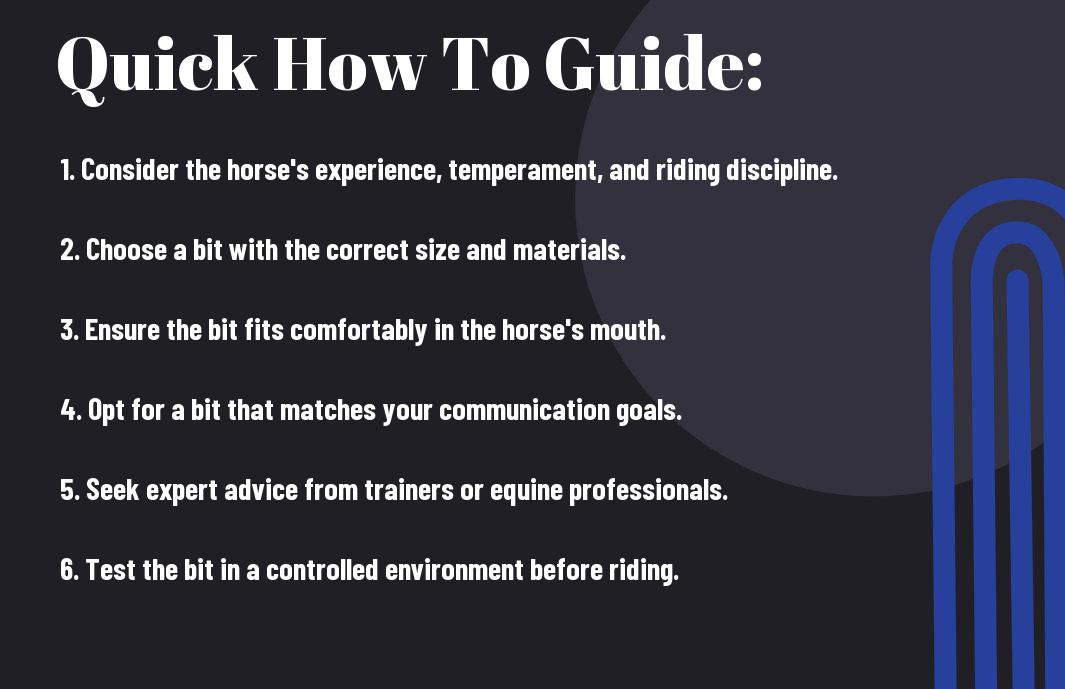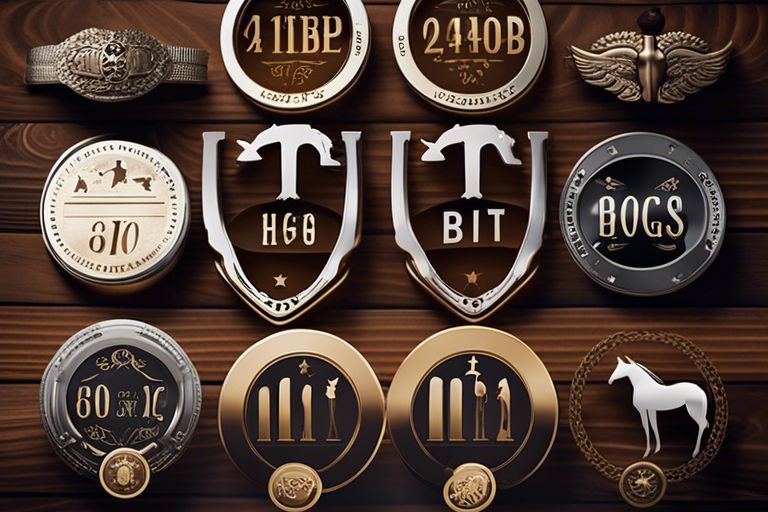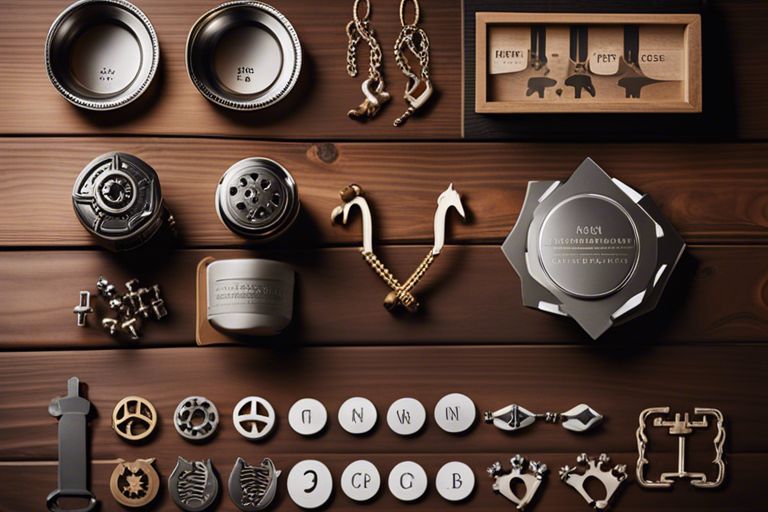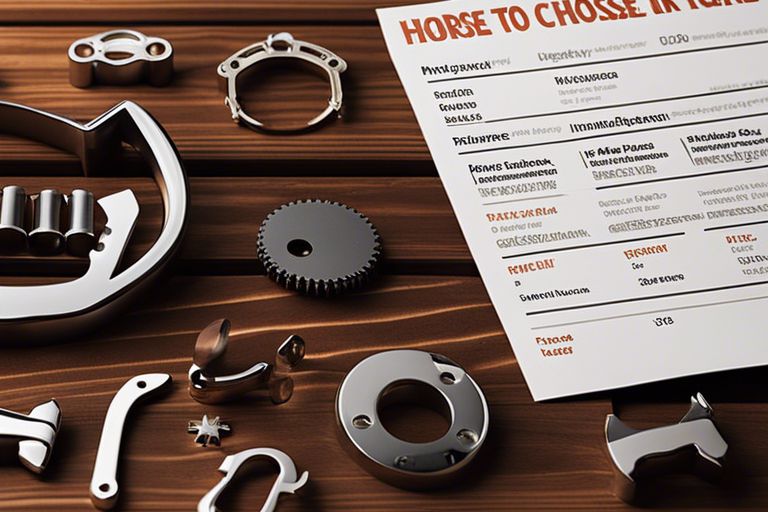Just like every rider, every horse is unique, and finding the right bit for your horse is crucial for effective communication and a harmonious ride. Knowing the importance of selecting the correct bit can make a significant difference in your horse’s comfort and your communication clarity. Understanding the different types of bits and their functions will help you make an informed decision that suits your horse’s needs. Here are some tips to help you navigate the world of bits and find the perfect fit for your equine partner.

Understanding Your Horse’s Needs
A crucial step in choosing the right bit for your horse is understanding your horse’s individual needs. By taking into account factors such as breed, age, temperament, level of training, and experience, you can select a bit that will suit your horse’s requirements and promote effective communication between you and your equine companion.
Identifying Your Horse’s Breed, Age, and Temperament
There’s a diverse range of horse breeds, each with unique characteristics that can influence bit selection. For example, a sensitive Thoroughbred may require a gentler bit compared to a more resilient Quarter Horse. Additionally, the age of your horse can play a role in bit choice, as younger horses may need softer bits to accommodate their developing mouths. Understanding your horse’s temperament is also crucial; a nervous or anxious horse may benefit from a softer, more comfortable bit to promote relaxation and willingness to work with you.
Determining Your Horse’s Level of Training and Experience
Horses vary in their level of training and experience, which can impact the type of bit they are accustomed to and comfortable with. Knowing your horse’s level of training and experience allows you to select a bit that aligns with their skill level and promotes clear communication. Beginners might do well with a simple snaffle bit that is easy to understand and gentle on the mouth, while more advanced horses may require a bit with additional features for refined aids and cues.
Level of training and experience is a critical factor in determining which bit will be most suitable for your horse. It’s important to consider your horse’s familiarity with different types of bits and choose one that matches their training level to ensure effective communication and a comfortable riding experience.

Factors to Consider When Choosing a Bit
If you’re looking to choose the right bit for your horse, there are several factors you need to take into consideration. It’s important to think about your horse’s mouth size and shape, the material and quality of the bit, the type of riding and discipline you do, as well as your rider’s skill level and experience. Let’s break down each of these factors to help you make the best choice for your horse.
Mouth Size and Shape
Even though there are standard bit sizes, not all horses have the same mouth size and shape. It’s crucial to ensure that the bit you choose fits your horse comfortably. A bit that is too small can cause pinching and pain, while a bit that is too large may cause rubbing and difficulty in communication. After all, you want your horse to be relaxed and responsive while wearing the bit.
Bit Material and Quality
When deciding on a bit, you should consider the material and quality of the bit. The material can affect how your horse responds to the bit, as well as its durability and longevity. The quality of the bit is vital for your horse’s comfort and safety. A poorly made bit can break or rust, causing harm to your horse. It’s worth investing in a high-quality bit made from safe and durable materials.
Type of Riding and Discipline
Mouth – Different types of riding and disciplines require different bits. For example, a dressage rider may use a double bridle with a curb bit, while a trail rider may prefer a simple snaffle bit. Consider what material will best suit the demands of your riding style and discipline to ensure clear communication and comfort for your horse.
Rider’s Skill Level and Experience
One – Your rider’s skill level and experience play a significant role in choosing the right bit. A more experienced rider may have a lighter hand and be able to use a more refined bit, while a novice rider may need a bit that provides more clear signals to the horse. Plus, it’s vital to match the bit to your skill level to ensure effective communication and a positive riding experience for both you and your horse.

Types of Bits and Their Uses
To choose the right bit for your horse, you must understand the different types of bits available and their specific uses. Snaffle bits, curb bits, gag bits, and specialty bits like the Pelham and Kimblewick each serve a different purpose and have varying levels of severity. Knowing when and how to use each type of bit is vital for the well-being and training of your horse.
| Snaffle Bits | Curb Bits |
| Gag Bits | Specialty Bits |
| Pelham | Kimblewick |
Snaffle Bits: When and How to Use Them
Bits such as snaffles work on direct pressure and are considered milder options, making them ideal for young or green horses. Using a snaffle bit can help with basic training and communication with your horse. These bits have a simple design with a single joint or a straight mouthpiece, providing gentle cues to the horse when rein pressure is applied correctly. It’s important to use proper rein aids and have light hands when using a snaffle to avoid inadvertently causing discomfort to your horse.
Curb Bits: Understanding Their Purpose and Application
When you need a bit that offers leverage and provides more control over a fully trained horse, a curb bit is a suitable choice. Curb bits are designed to work on indirect pressure, acting on the horse’s chin and poll in addition to the mouth. These bits have shanks that amplify the rider’s input, making them more severe than snaffle bits. Understanding how to use curb bits correctly is crucial to prevent harsh handling and maintain clear communication with your horse.
The use of a curb bit requires finesse and educated hands to ensure that you are not inadvertently causing discomfort or pain to your horse. Proper fitting and adjustment of a curb bit are vital, as incorrect usage can result in severe consequences for your horse’s well-being. Regular training and practice can help you become more proficient in using curb bits effectively and humanely.
How to Measure Your Horse’s Mouth for the Right Bit
Not all horses have the same mouth size, so it’s crucial to measure your horse’s mouth accurately to ensure you select the right bit for them. In this guide, we’ll walk you through the steps to take precise measurements and understand how different bit sizes correspond to your horse’s mouth size.
Taking Accurate Measurements
There’s a simple and effective way to measure your horse’s mouth to determine the correct bit size. Using a soft measuring tape, measure from the inside of one side of the horse’s lips to the other. Make sure to add a little extra room (about 1/4 inch) to allow for comfortable movement and prevent pinching when the bit is in place. This measurement will give you a good idea of the bit size your horse will need.
Understanding Bit Sizes and How They Correspond to Mouth Size
Right bit size is crucial for your horse’s comfort and response while riding. The size of the bit corresponds to the width of your horse’s mouth. If the bit is too narrow, it can cause pain and discomfort, while a bit that is too wide may slide around and cause communication issues between you and your horse. Choosing the correct bit size ensures a comfortable fit and effective communication during your rides.
A properly fitting bit should gently rest on the bars of your horse’s mouth without causing any pain or interference with their teeth. Choosing the right size bit is vital for your horse’s well-being and performance under saddle.

Tips for Trying Out a New Bit
Many equestrians find themselves in a dilemma when it comes to choosing the right bit for their horses. Here are some helpful tips to guide you through the process of trying out a new bit:
- Start by introducing the new bit gradually.
- Monitor your horse’s behavior and response closely.
- Adjust the bit to ensure proper fit.
Introducing the New Bit Gradually
The key to successfully transitioning to a new bit is to introduce it gradually to your horse. Start by allowing your horse to become familiar with the bit in their mouth without any pressure. Allow them to carry it around for short periods and gradually increase the time as they get more comfortable.
Monitoring Your Horse’s Behavior and Response
There’s nothing more important than paying close attention to your horse’s behavior and response when trying out a new bit. Observe how your horse reacts to the bit during various riding activities such as turning, stopping, and collection. This will give you valuable insights into whether the bit is the right fit for your horse.
Introducing a new bit can sometimes be a challenging process, as every horse reacts differently to changes in equipment. Remember to be patient and attentive to your horse’s cues to ensure a smooth transition.
Adjusting the Bit to Ensure Proper Fit
Your horse’s comfort and well-being should always be your top priority when trying out a new bit. Make sure the bit is properly fitted to your horse’s mouth to avoid any discomfort or potential injuries. A well-fitted bit will allow for clear communication between you and your horse without causing any unnecessary stress.
Common Mistakes to Avoid When Choosing a Bit
Focusing Too Much on Price Rather Than Quality
Even though cost is a factor to consider when purchasing a bit for your horse, choosing a bit solely based on price can be a common mistake. Cheaper bits may seem like a good deal at the time, but they could potentially cause discomfort or even harm to your horse in the long run. It’s vital to prioritize quality and fit over price to ensure the well-being and comfort of your horse.
Ignoring Your Horse’s Individual Needs and Preferences
To select the right bit for your horse, you must consider their individual needs and preferences. Each horse is unique, and what works for one horse may not work for another. Factors such as the horse’s conformation, mouth shape, and sensitivity should all be taken into account when choosing a bit. Ignoring these factors can lead to discomfort, resistance, and poor performance while riding.
Plus, pay attention to how your horse reacts to different bits during training sessions. If you notice signs of discomfort, such as tossing their head, grinding their teeth, or resisting cues, it may be an indication that the bit is not suitable for them. Take the time to understand your horse’s preferences and listen to their feedback to find the most suitable bit for them.
Not Considering the Rider’s Skill Level and Experience
With any bit selection, it is crucial to consider the rider’s skill level and experience. A bit that is suitable for a more experienced rider may not be appropriate for a beginner. Choosing a bit that is too harsh or complex for your skill level can lead to miscommunication, discomfort for your horse, and potential safety risks. It’s important to select a bit that matches your riding abilities and experience to ensure clear communication and a positive riding experience for both you and your horse.
Conclusion
Ultimately, when it comes to choosing the right bit for your horse, it is important to consider your horse’s individual needs and comfort. Take into account factors such as your horse’s level of training, mouth sensitivity, and behavior under saddle. By working closely with your trainer or an experienced professional, you can select a bit that promotes clear communication and a comfortable riding experience for both you and your horse.
Remember that what works for one horse may not work for another, so be patient and open to trying different options until you find the perfect fit. Regularly check your horse’s mouth and behavior to ensure that the bit you have chosen is suitable and comfortable. By prioritizing your horse’s well-being and communication, you can build a strong partnership with your equine companion in the arena and on the trail.
FAQ
Q: What factors should I consider when choosing a bit for my horse?
A: When choosing a bit for your horse, consider the horse’s level of training, discipline, mouth anatomy, and any previous issues with bits.
Q: How can I determine the right size of the bit for my horse?
A: To determine the right size of the bit for your horse, measure the width of their mouth, ensuring there is a small gap on each side of the bit when it’s in their mouth.
Q: What are the different types of bits available for horses?
A: There are various types of bits available, including snaffle bits, curb bits, pelham bits, and gag bits, each serving different purposes and providing different levels of control.
Q: How do I know if a bit is causing discomfort or pain to my horse?
A: Watch for signs of discomfort such as head tossing, resistance, teeth grinding, or evasion behaviors. Ensure proper fitting and consult with a professional if issues persist.
Q: Should I consult with a professional before choosing a bit for my horse?
A: It’s always recommended to consult with a professional such as a trainer, veterinarian, or equine dentist when choosing a bit for your horse to ensure the best fit and comfort for your horse.











